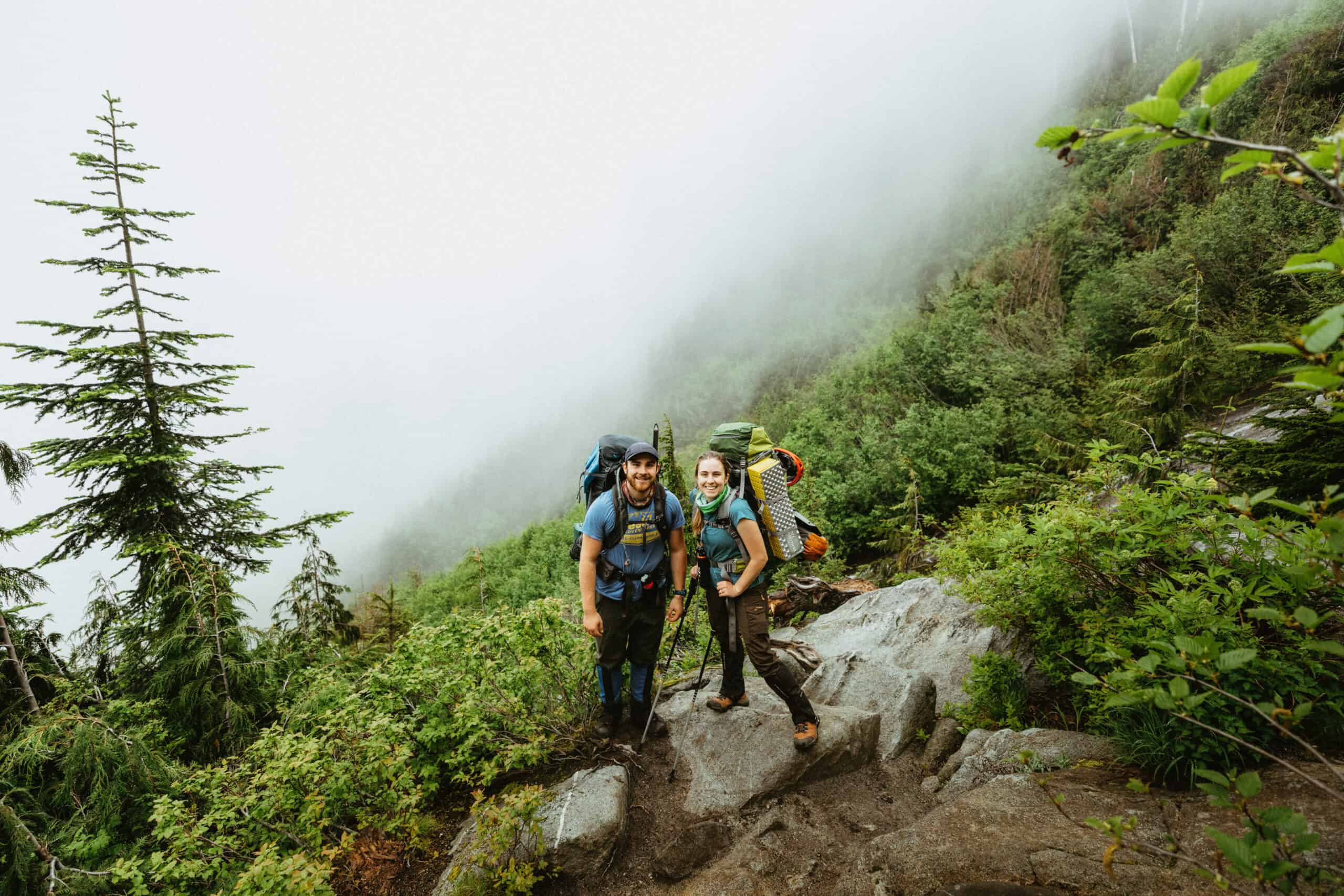Post Summary: Fun Facts About North Cascades National Park
Venture into America’s Alps–a 500-mile stretch of mountains that has a wide breadth of outdoor adventure opportunities.
In North Cascades National Park, you’ll find some of the most scenic vistas and landscape you’ll ever see in your life, tons of wildlife unique to this area of the PNW, and lots of epic trails.
Keep reading to learn more fun facts about North Cascades National Park!
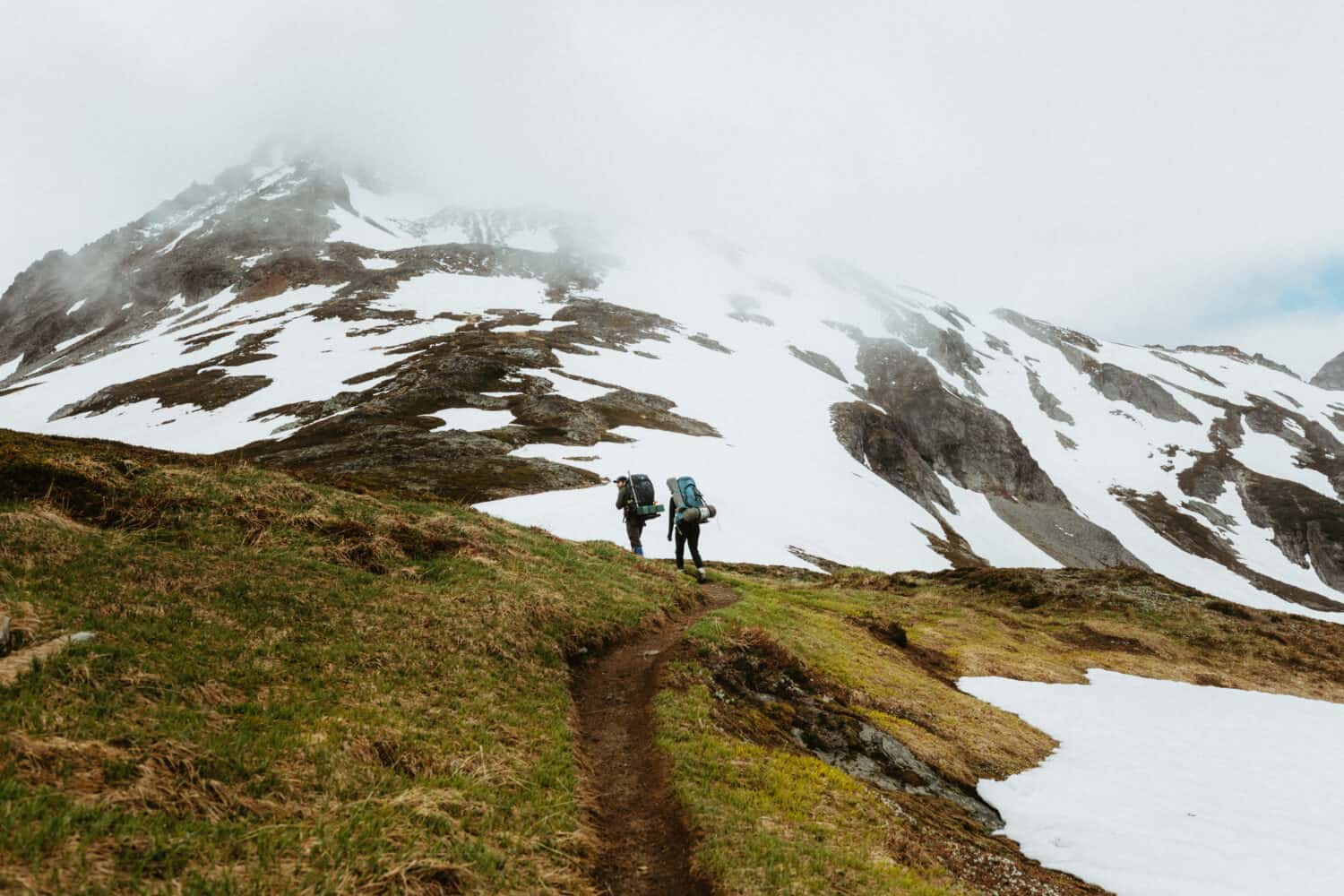
Fun Facts About North Cascades National Park
Fast Facts About North Cascades National Park
- North Cascades National Park is located in northwestern Washington State
- The park is made up of northern and southern units, including two national recreation areas
- The park includes 684,237 acres of land
- The most popular places in North Cascades National Park are Lake Chelan and Stehekin
- There are over 300 glaciers in North Cascades National Park
- There are 81 historical sites in the park, 16 of which are historical buildings and 23 are historical landscapes
- There are 260 prehistoric sites in the park that date back to over 8,500 years old
- 93% of the park is designated as protected wilderness
- North Cascades National Park has over 17,000 guests per year
- There are over 400 miles of trails in NCNP
Unique Facts About North Cascades National Park
1. North Cascades is actually a park complex that consists of the North Cascade Park, Ross Lake National Recreation Area, and Lake Chelan National Recreation Area.
The park complex’s northern border is made up of North Cascade Park, the middle section is made up of Ross Lake National Recreation Area, and the fjord-like Lake Chelan makes up the park’s southern boundary.
Each of these areas have their own unique landscapes, wildlife, and management needs. They are all open for the public to learn more about the scenery, history, geology, and recreational opportunities in this corner of the PNW.
2. North Cascades is located in Northwest Washington State, close to the border of Canada.
The entire Cascade Mountain Range starts at Lassen Peak in northern California, through western Oregon and Washington, and extends across the border to southern British Columbia, Canada.
The North Cascades turn into Skagit Valley Provincial Park in Canada!
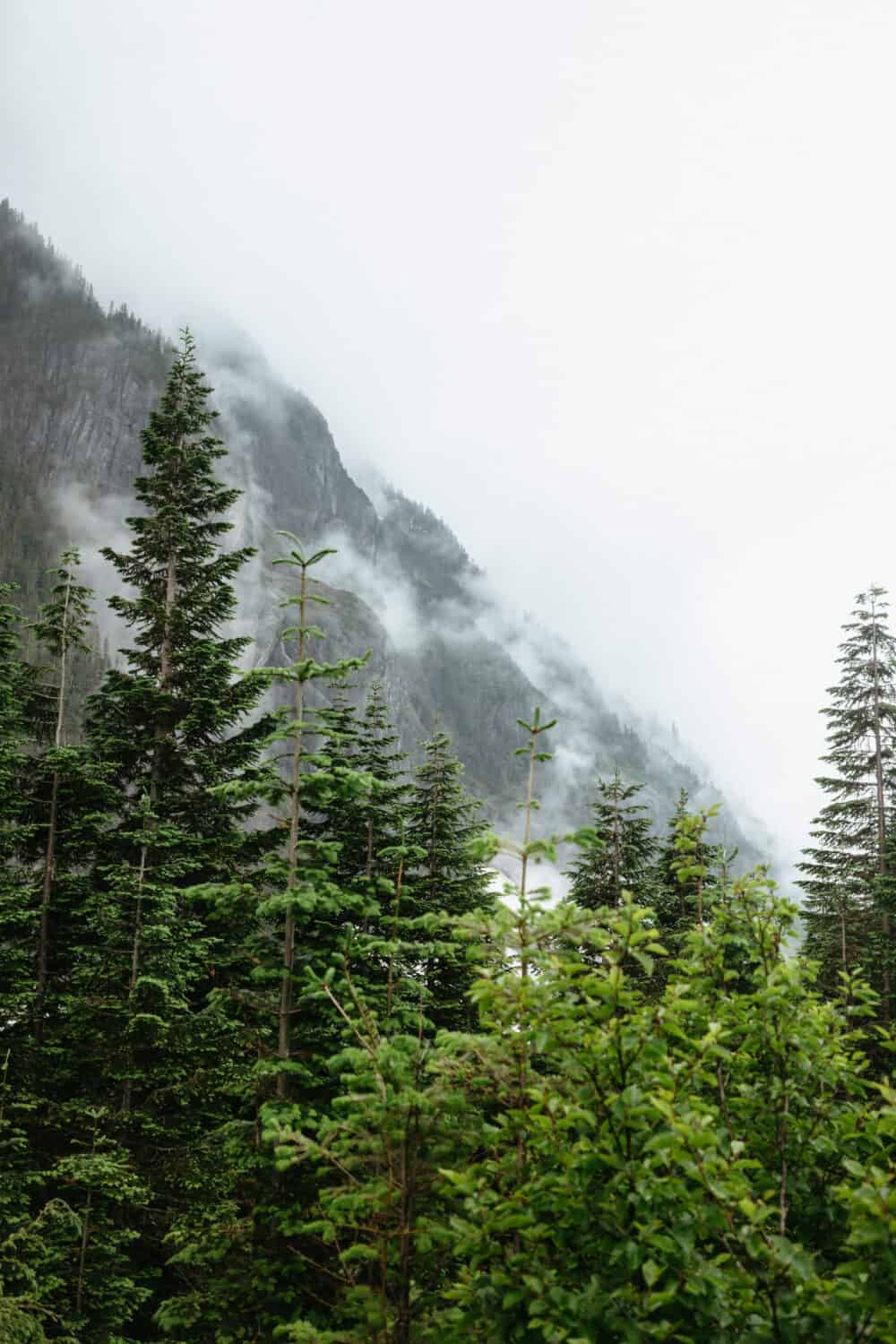
3. North Cascades National Park is in the Cascade Mountain Range.
As the Cascade Mountain Range stretches over 500 miles of land from northern California and into Canada, there are numerous named portions of the geological feature.
From north to south, there’s the Canadian Cascades, North Cascades, and Western Cascades. Within these sections, there are 11 national forests:
- Gifford-Pinchot National Forest
- Okanogan-Wenatchee National Forest
- Mount Baker-Snoqualmie National Forest
- Mount Hood National Forest
- Willamette National Forest
- Deschutes National Forest
- Umpqua National Forest
- Rogue River-Siskiyou National Forest
- Fremont-Winema National Forest
- Lassen National Forest
- Shasta-Trinity National Forest
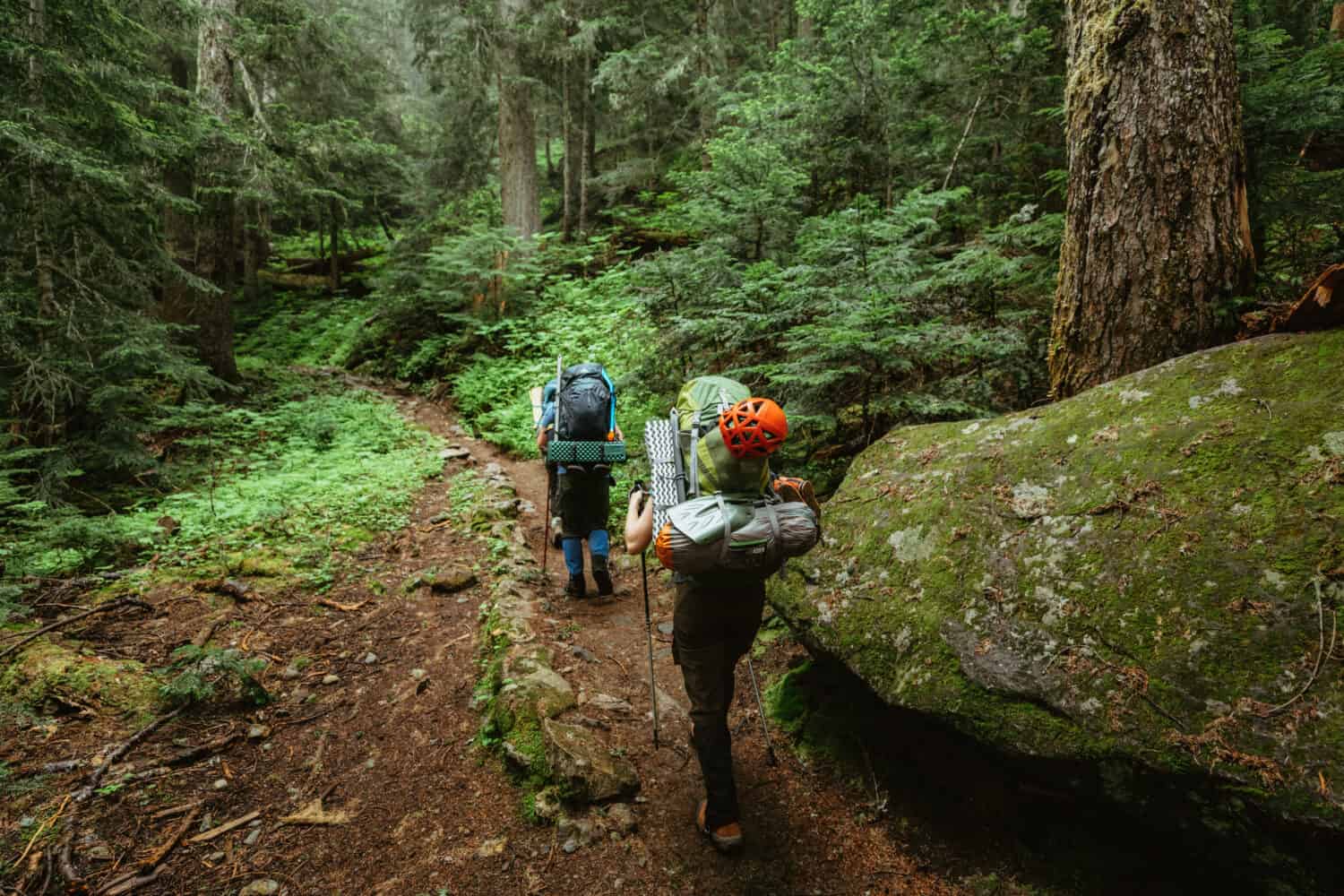
4. Popular activities here include hiking, biking, camping, backpacking, boating, and rock climbing.
There are tons of water sports and active things to do in North Cascades National Park–especially mountaineering and boating on Lake Chelan.
Birding and enjoying wildlife are other popular activities in North Cascades National Park.
5. The highest elevation in the park is Goode Mountain at 9,220 feet.
Goode Mountain is a class 5 climb with exposed sections and should only be climbed by experienced mountaineers.
You can summit Goode Mountain on a 37-mile route with 8,400 feet elevation gain. That’s a serious climb!
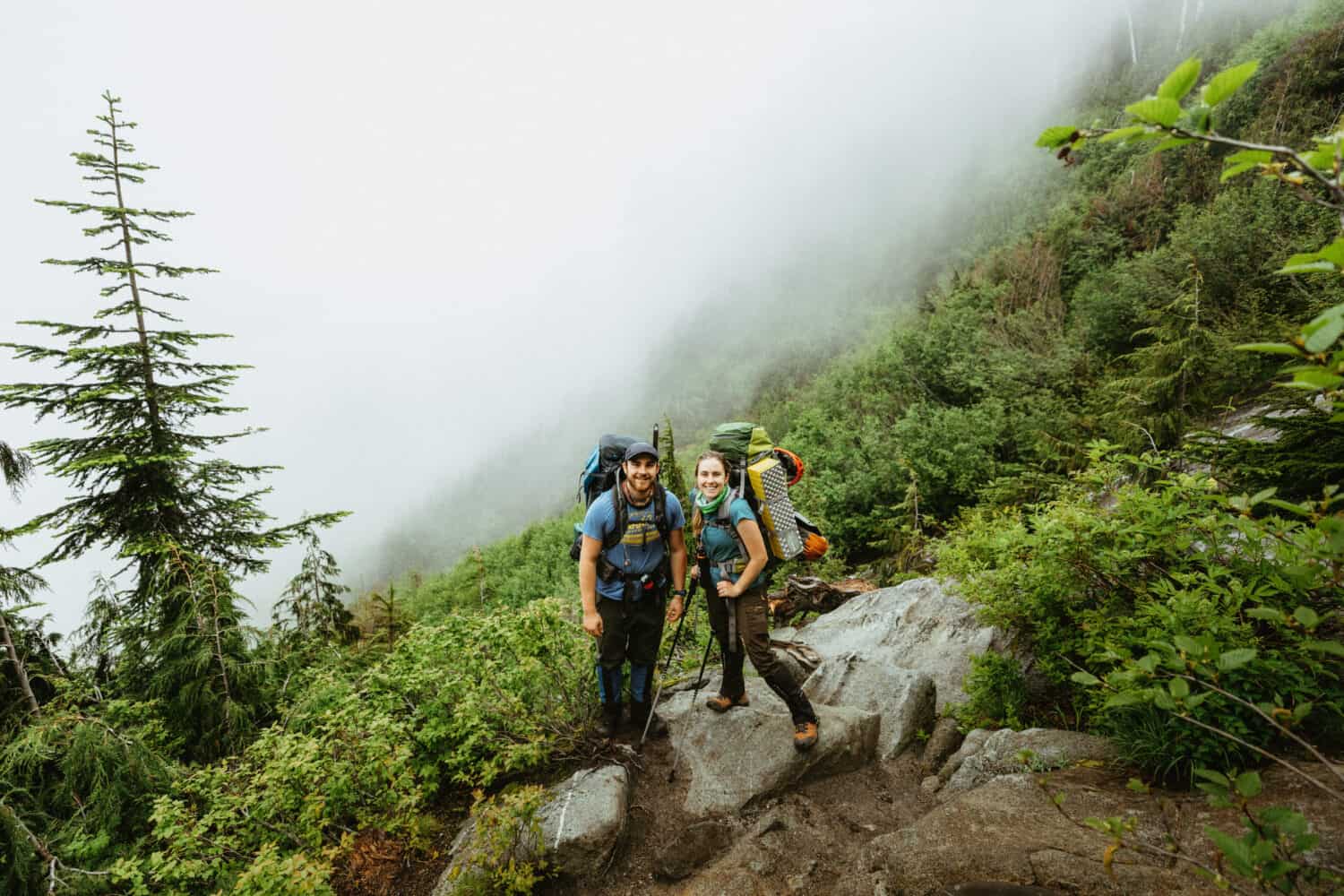
6. North Cascades National Park became a national park on October 2, 1968.
The North Cascades area became part of the public domain with the claiming of the Oregon Territory in 1846.
This area of the Pacific Northwest was up for debate whether it should become a national park or not. And while there was lots of pressure from conservationists to protect the land in the late 1930s, it wasn’t until 1968 when President Lyndon B. Johnson signed it off as a national park.
The park originally was 505,000 acres, but since 2011, North Cascades National Park has been expanded to 684,237 acres.
Learn more about NCNP’s unique history here!
7. There are few public roads in the park and some areas are even inaccessible to people.
It’s widely known that North Cascades National Park is among some of the most rugged places in the United States outside of Alaska, making it one of the least traveled parks in the US.
For example, you cannot drive to Stehekin; rather, you must boat, ferry, horseback ride, hike on the Pacific Crest Trail, or take a plane to the small town on Lake Chelan!
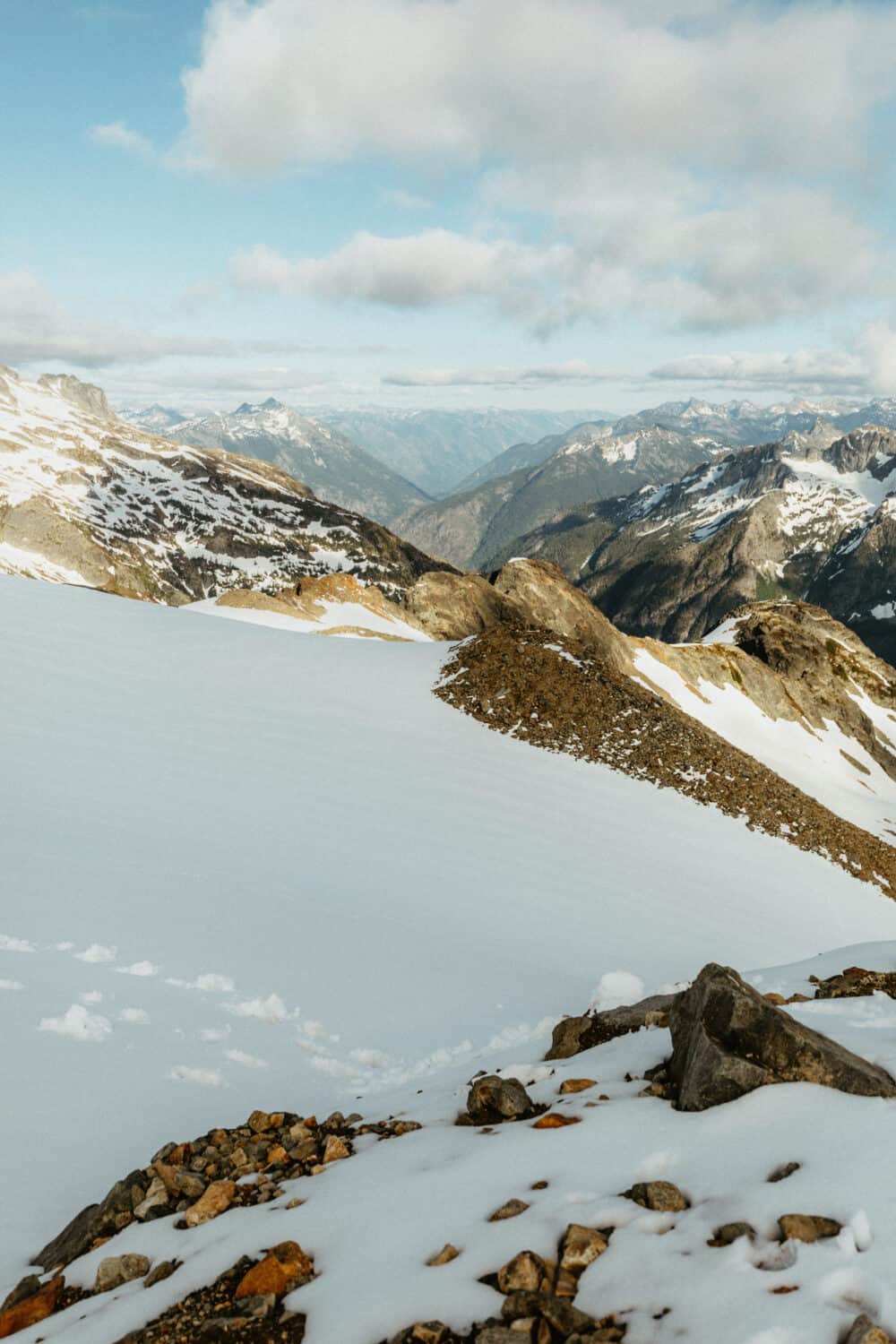
Geology Facts About North Cascades National Park
8. There are tons of snow fields and over 300 glaciers in the park – that’s more than Glacier National Park!
You can see many of the North Cascades glaciers on hikes and mountaineering adventures in the park – it’s an adventure of a lifetime!
The glaciers in North Cascades National Park are heavily monitored and protected, especially as they continue shrinking.
9. North Cascades has a Canadian twin park – Skagit Valley Provincial Park.
Because of its proximity to Canada, North Cascades National Park borders Skagit Valley Provincial Park.
Both parks share lots of common features, as they’re in similar areas of the PNW.
10. There are 260 prehistoric sites in North Cascades National Park.
Some of these prehistoric sites date back 8,500 years!
These prehistoric sites in NCNP include Northwest Coast Indian artifacts and sites, mines and mining camps, fire lookouts, a hotel, sawmills, homesteads, and sheep herder camps.
11. Mining and logging were prominent industries in the past.
Like many areas of the PNW, mining and logging were very important industries that kept the economy running in the North Cascades (despite the fact that this area’s gold rush ended early in the 1880s).
Due to lush forests and a high amount of natural resources, the Pacific Northwest became a hot spot for these production industries in the 19th and 20th centuries.
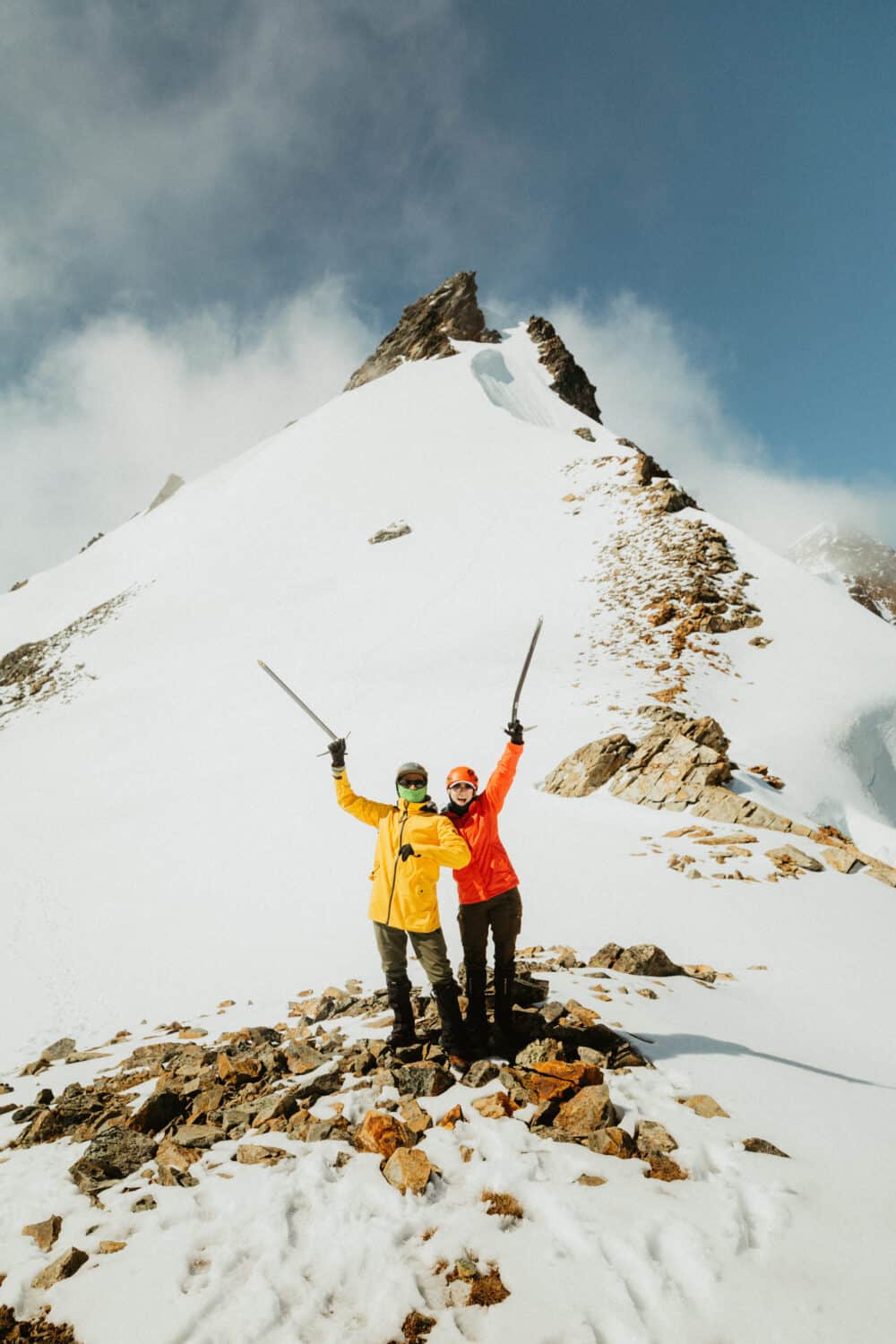
12. Mountaineering is a popular activity in the park.
Some of the most popular mountaineering treks in North Cascades National Park are Goode Mountain and Mount Sahale–both of which are difficult, but rewarding hikes!
Other popular mountaineering hikes in this area are: Cascade Pass Trail, Pierce Mountain Camp via Sourdough Mountain Trail, Sourdough Mountain Camp via Sourdough Mountain Trail, Sourdough Mountain Lookout, and the Cascade Pass Trail to Cottonwood Camp.
13. Lake Chelan is the largest natural lake in Washington!
Lake Chelan is one of the most popular places to visit in North Cascades National Park, because of the numerous water sports and activities in the area.
Some of the most popular activities at Lake Chelan include boating, jet skiing, biking the lake on the Echo Ridge Trails or Devil’s Backbone, and fishing!
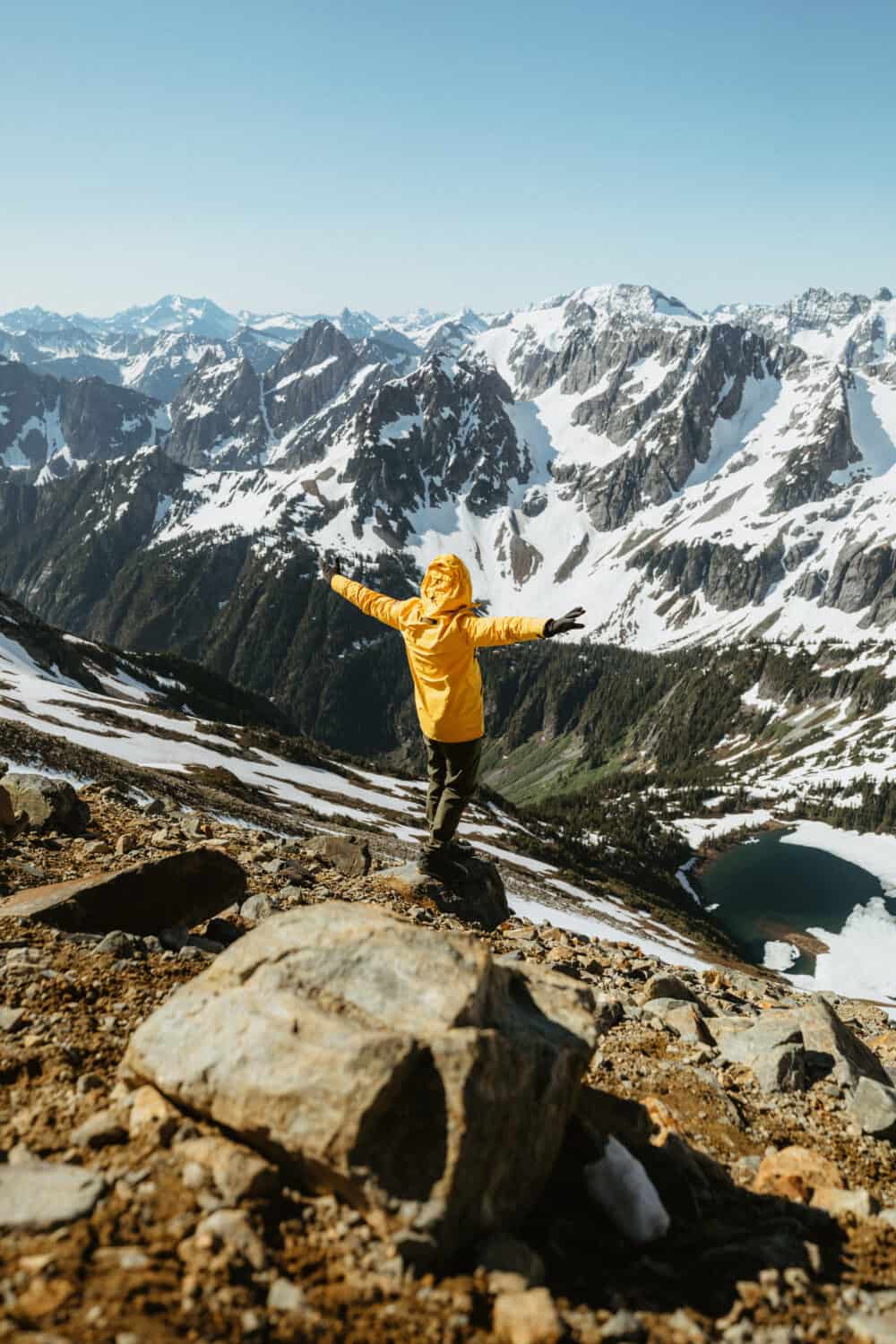
History of North Cascades National Park
14. Stephen Mather Wilderness includes about 93% of the North Cascades National Park Service Complex.
The Stephen Mather Wilderness is protected space and has stricter rules for recreation and use.
You can visit the Stephen Mather Wilderness for ultimate solitude and awe, but that comes with the notion that you’re maintaining it for future generations and always leaving no trace.
15. Many of the lakes in the park were formed by dams and are managed by the Seattle Power and Lights.
If you want to learn more about the impact of power requirements on North Cascades National Park, you can go on a Seattle Power and Lights tour.
It’s a great chill and easy PNW activity for seniors!
16. The Upper Skagit, the Chilliwack, the Nlaka’pamux (Lower Thompson), and the Chelan were among the first communities to live in the North Cascades.
Since time immemorial, these indigenous groups have inhabited the land of North Cascades National Park. Their impact on the land is still present today!
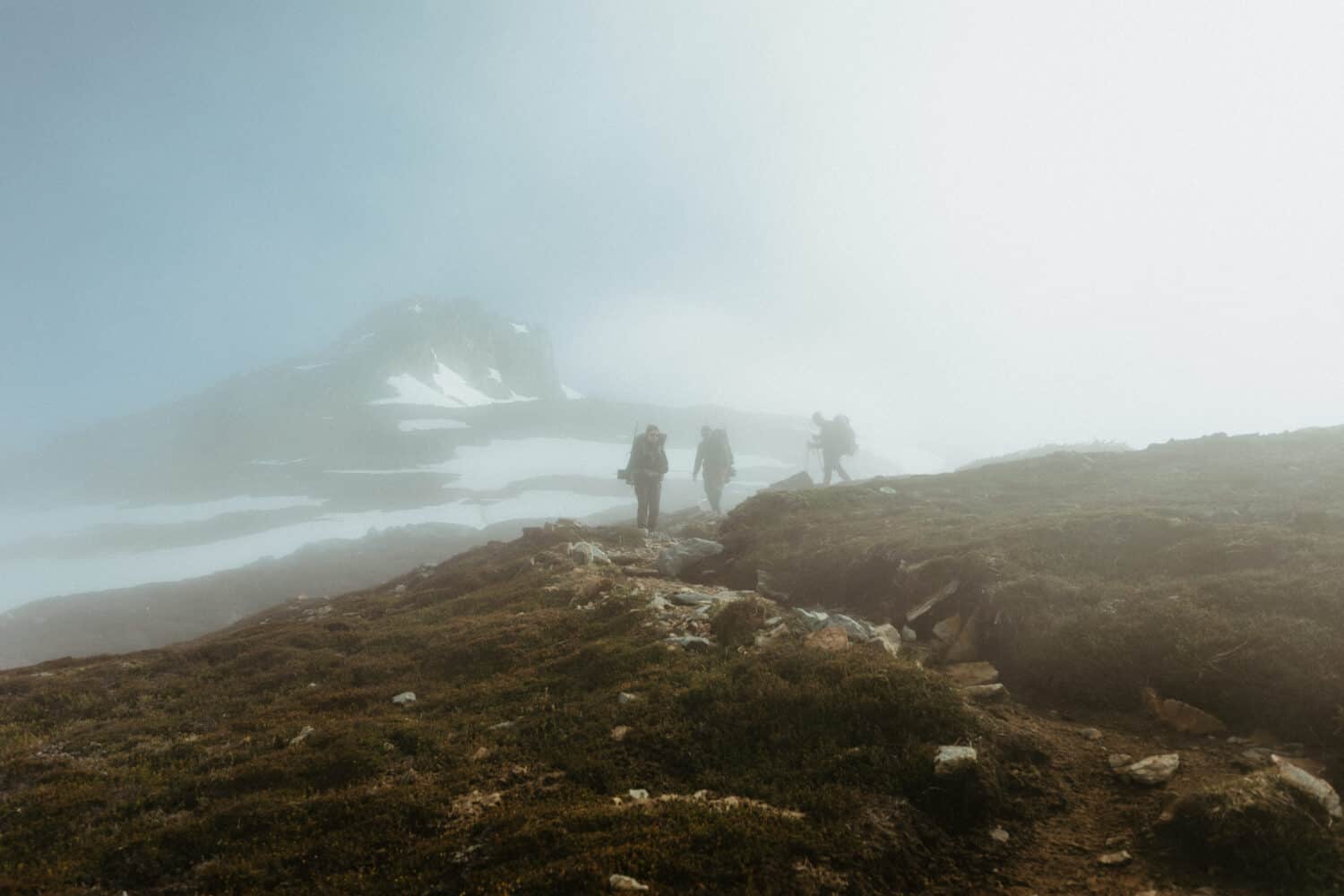
17. Alexander Ross was the first white person to cross the Cascades.
Alexander Ross, a fur trader and explorer, and three Indigenous people crossed the North Cascades in 1814. He was hoping to discover new routes for trade–namely to gain access to the Puget Sound/Salish Sea.
He was also a prominent figure in establishing Astoria, Oregon as another significant fur trading port in the 1800s.
18. John Jacob Astor (the millionaire businessman from Astoria), made a fortune in the fur trade around the North Cascades and traded goods in New York.
This prominent man of Astoria (the city’s namesake!) was a huge instigator on trade in this area of the Pacific Northwest and founded the American Fur Company.
Astor used the Pacific Fur Company and Southwest Fur Company. These are two company subsidiaries of the American Fur Company. They controlled trade on the Columbia River and Great Lakes area, which further increased his fortune.
19. The first proposal to make a national park was in 1892 when a Central Washington group tried to promote protecting Lake Chelan.
This group’s efforts did not go unnoticed! However, it wasn’t until 1968 when this area of Washington became an official national park.
Today, there are still many organizations promoting the protection of Lake Chelan. Keep It Blue Lake Chelan focuses on keeping this area of North Cascades National Park clean and safe!
Interesting North Cascades National Park Facts
20. The North Cascades have some of the most diverse species of plants and animals in North America!
This includes 75 species of mammals, 21 species of reptiles and amphibians, 200 species of birds, 28 species of fish, 250 aquatic invertebrate species, and over 500 species of land insects.
Likewise, there are over 1,627 vascular plant species of ferns, grasses, lichens, trees and shrubs, and wildflowers in North Cascades National Park!
There are likely many more species of plants and animals in the North Cascades that are yet to be discovered!
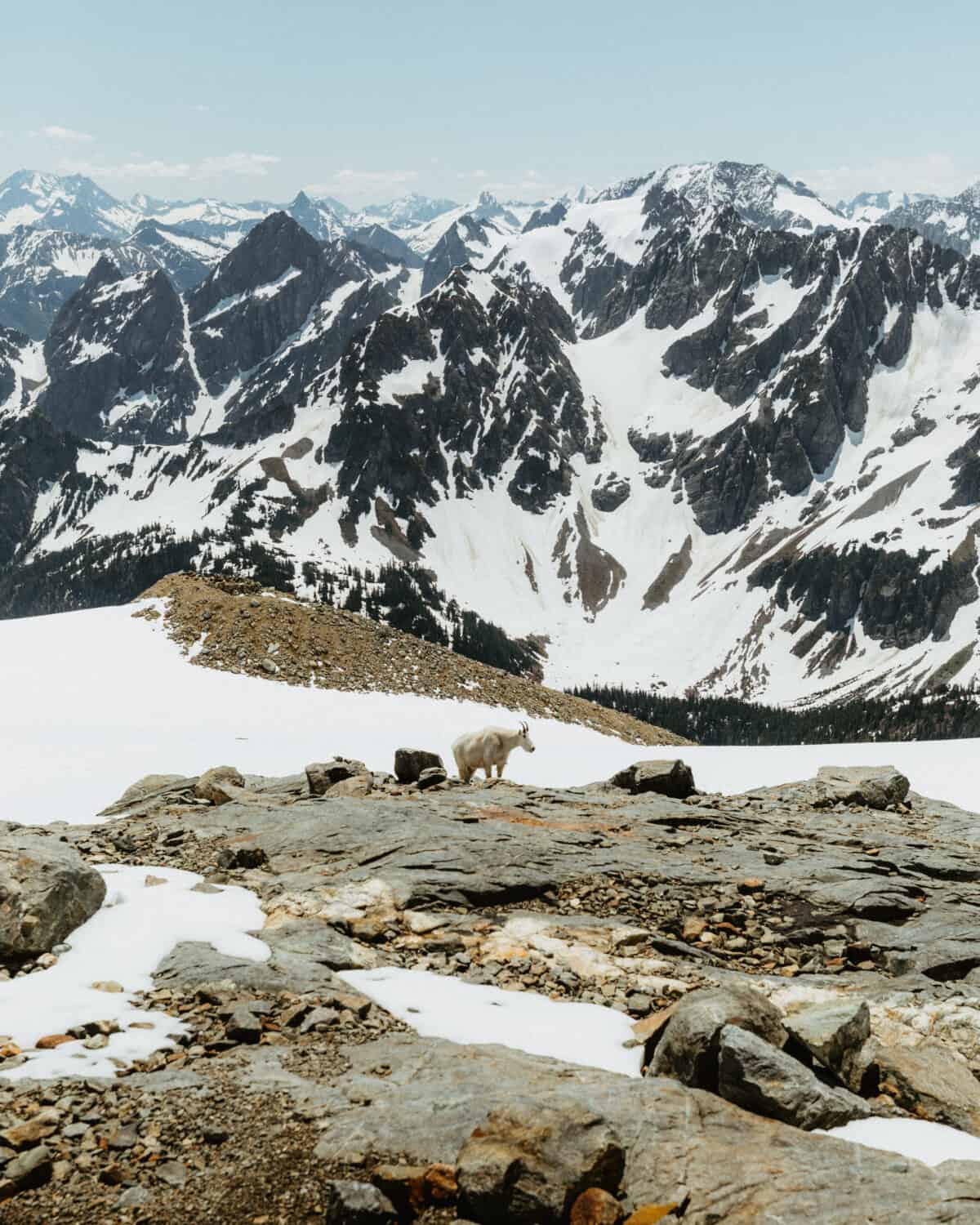
21. There are 75 species of mammals found in the park.
All of these animals fall under 20 families of mammals.
These include gray wolves, grizzly bears, black bears, wolverines, river otters, cougars, lynx, and bobcats, bats, pikas, and MORE!
The most common mammal you’ll see in North Cascades National Park is the Hoary Marmot, especially in subalpine meadows!
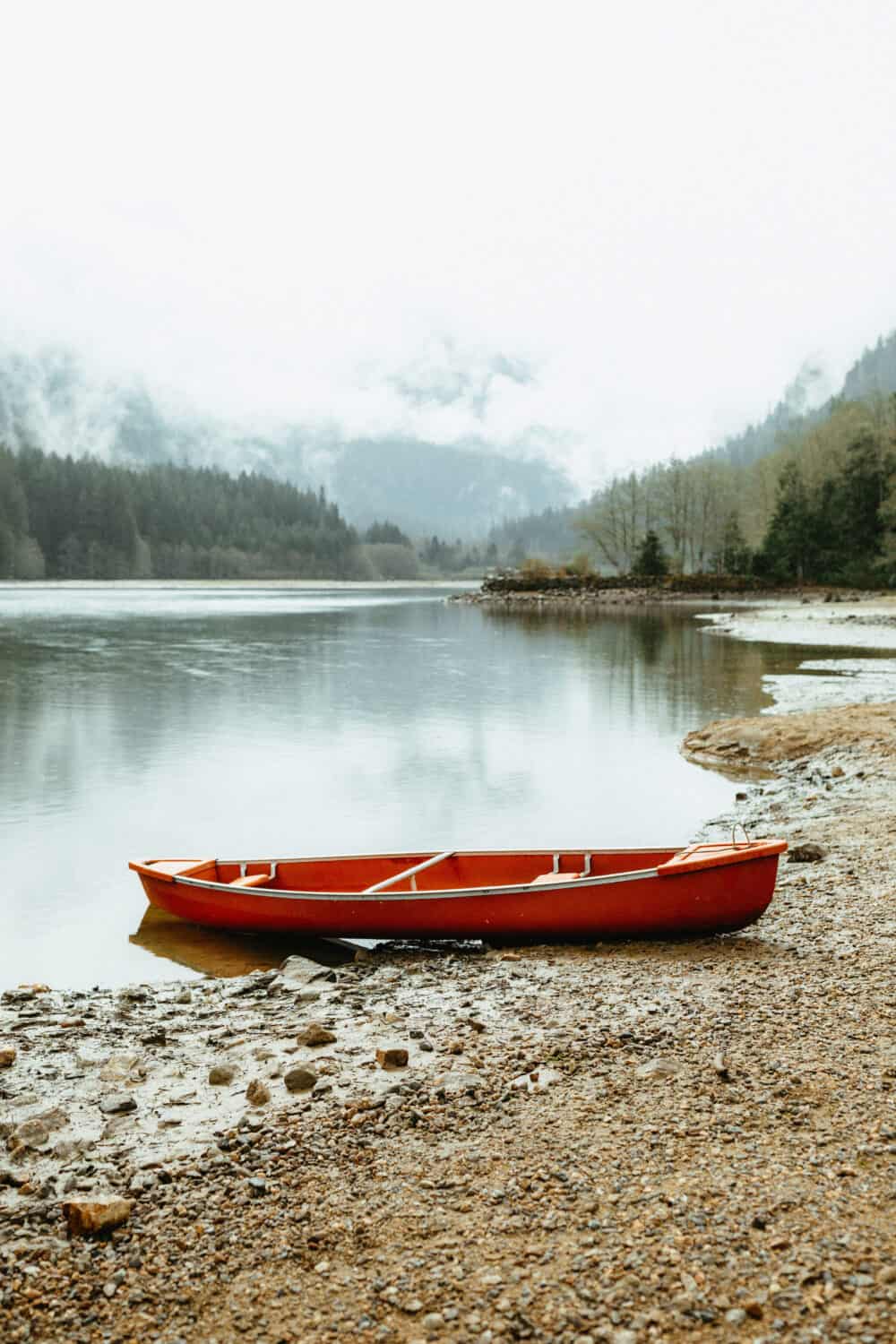
22. You can go canoe camping in North Cascades on Ross Lake!
With stunning views of the Cascade Mountains, Ross Lake is one of the most beautiful places to go boating and camping in the Pacific Northwest!
One of the most popular ways to boat Ross Lake is on a canoe. You can rent them from the Ross Lake Resort.
NOTE: You can only access Ross Lake by car via a gravel road from Hope, British Columbia in the north. There are two graded-cement boat ramps at Hozomeen Campground that are open from mid-June through September. However, the road is not anticipated to open in 2023 due to damage. This means you can only gain boat access to Ross Lake via Diablo Lake.
You can launch from the Colonial Creek Campground on Diablo Lake and boat five miles to the end of Diablo Lake. Then, your boat and gear must be portaged around the Ross Dam over a mile-long gravel road. It’s a fun canoe trip for those looking for an adventure!
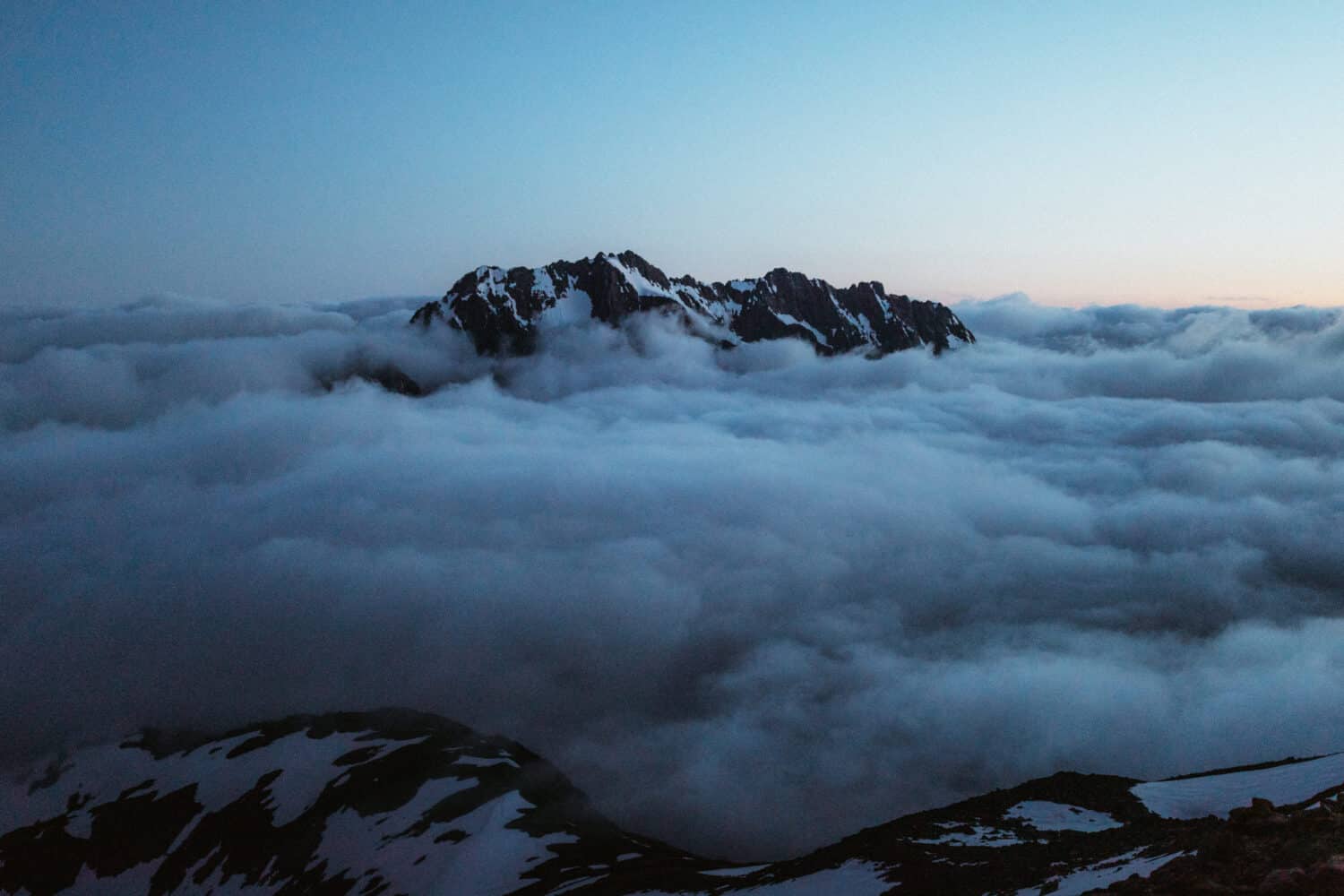
23. North Cascades National Park is nicknamed the “American Alps.”
The mountains in North Cascades National Park rank as some of the country’s wildest and most rugged mountains outside of Alaska.
Their outstanding scenery inspired this nickname, The American Alps, and if you visit NCNP, you’ll likely say the same!
24. One of the best ways to see the park is on the North Cascades Highway (State Highway 20).
Stretching 250 miles through the beautiful park, the North Cascades Highway (State Highway 20) is one of the best scenic drives in Washington!
There are tons of scenic overlooks, short hikes, lakes (over 500!), and picnic spots along the North Cascades Highway.
Some of the best places to stop and have a picnic in North Cascades National Park include Buckner Orchard, off the Old Wagon Trail, off the Happy Creek Nature Trail, near the Gorge Lake Campground, and at the Goodell Creek Campground.
25. One of the most popular trails in North Cascades National Park is the Sterling Munro Trail.
This 300-foot-long boardwalk trail is one of the best trails in North Cascades National Park. This is because of its stunning views of the Picket Mountains and Terror Glacier.
The Sterling Munro Trail is one of the easiest trails in North Cascades National Park. It’s just 0.3 miles out and back with 3 feet of elevation gain! The Sterling Munro Trail is both wheelchair and stroller friendly.
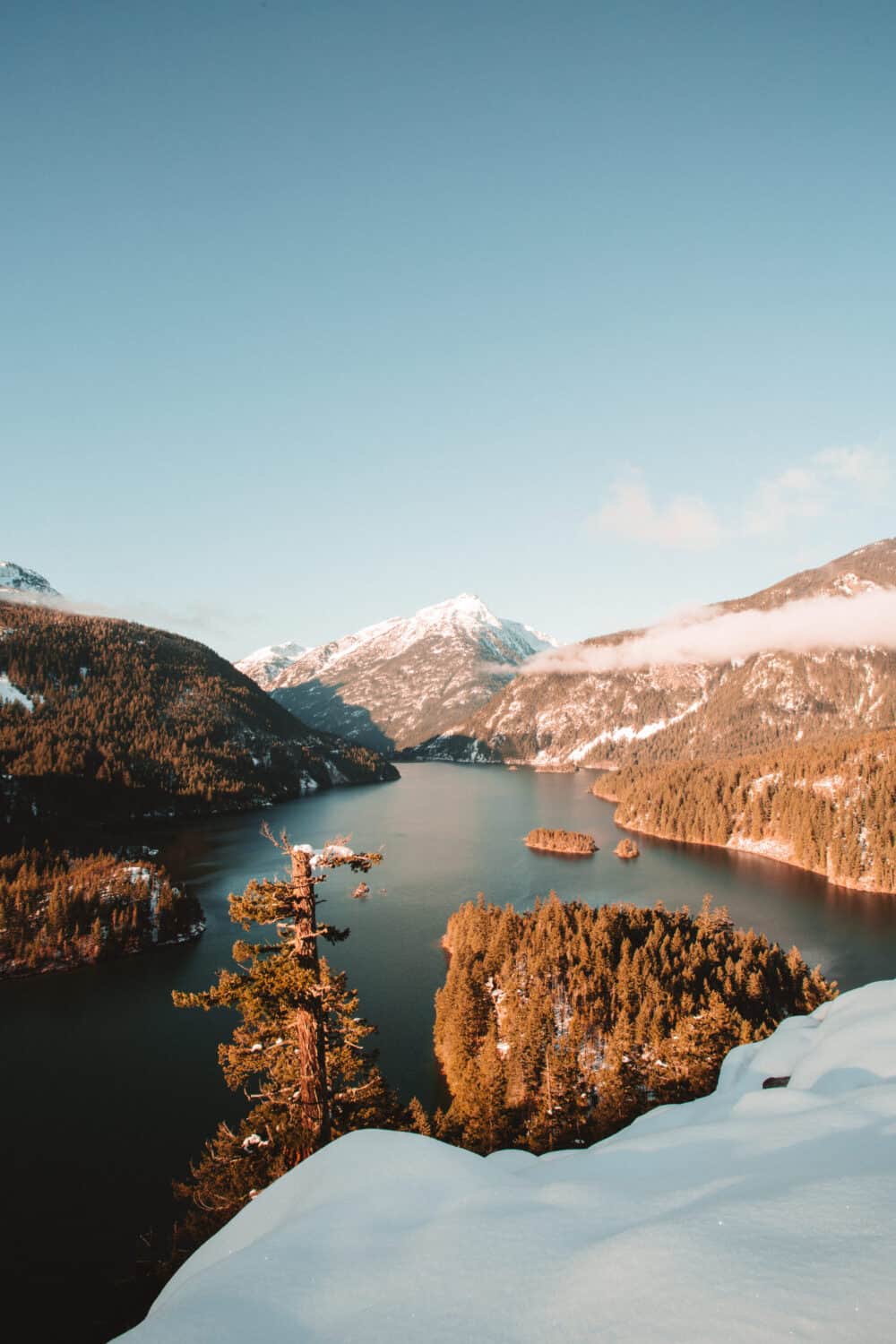
26. There are tons of scenic overlooks in NCNP.
Some of the best scenic overlooks in North Cascades National Park are the Washington Pass Overlook, Gorge Lake Overlook, Diablo Lake Vista Point, Hidden Lake Lookout (where you can even stay overnight!), Trail of the Cedars Nature Walk, and Sourdough Mountain Lookout.
27. There are over 400 miles of trails in North Cascades National Park.
Some of the most popular trails in North Cascades National Park include the Cascade Pass Trail, Sourdough Mountain Lookout, and the Cascade Pass Trail to Cottonwood Camp.
This is one of the best fun facts about North Cascades National Park. It’s a way people of all ages can enjoy the Pacific Northwest and engage in easy or challenging physical activity!
28. Lake Chelan is the 3rd deepest lake in the United States.
Lake Chelan is also the 26th deepest lake in the entire world!
29. North Cascades National Park’s sister park is Peneda-Gerês National Park in Portugal.
In 2019, North Cascades National Park in Washington State and Peneda-Gerês National Park in Portugal became sister parks.
This means that each park can learn more about each other’s protected lands. They can share management ideas on preservation and conservation, exchange information about the value of biodiversity, and increase the exchange of tourists between both countries.
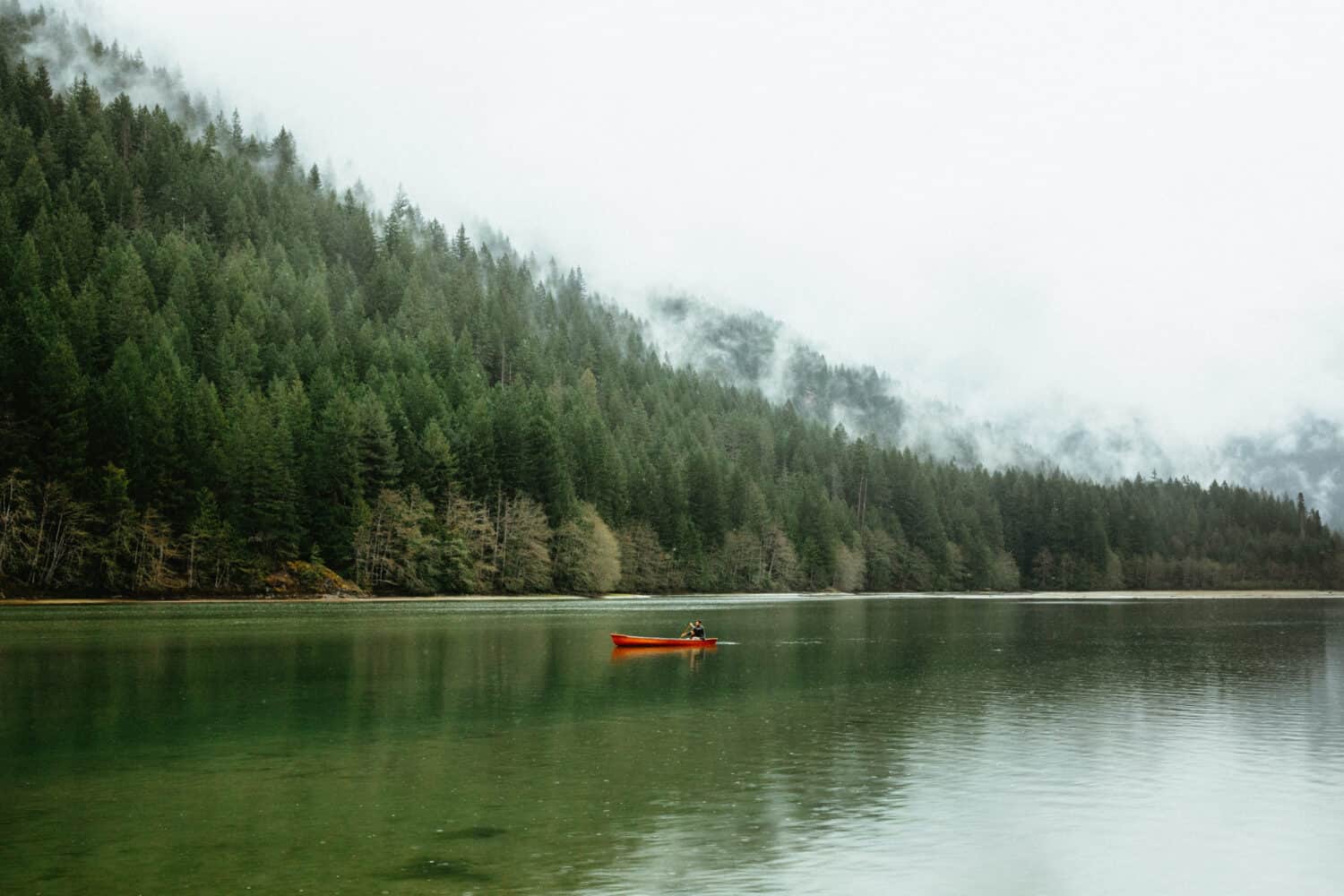
30. The Ross Lake Dam supplies more than 20% of Seattle’s power requirements.
You can see the Ross Lake Dam for yourself on the Ross Dam Trail. The trail is easy, 1.6 miles roundtrip with 500’ elevation gain.
This trail is great for kids, dogs on leashes, and is the perfect opportunity to learn more about how the North Cascades supply energy for the Pacific Northwest!
More North Cascades National Park Resources
The Best Places To Live in the Pacific Northwest (Big Cities to Small Towns)
The 21 Most Haunted Hikes in the Pacific Northwest
24 Famous Movies Set in the Pacific Northwest
The 9 Best Resorts in the Pacific Northwest
52 Hikes Challenge (Pacific Northwest Edition)
Where To Travel Based On your Zodiac Sign
